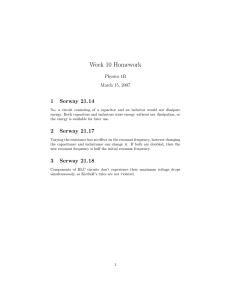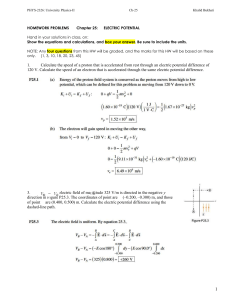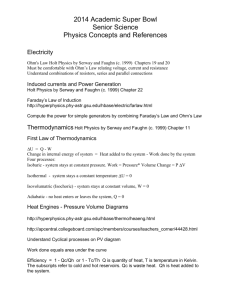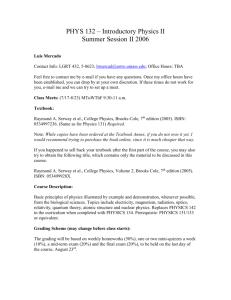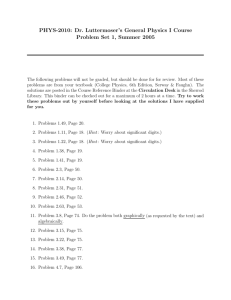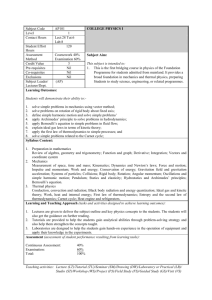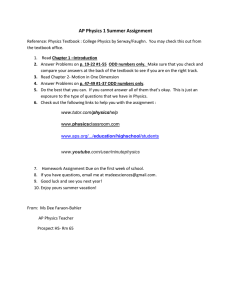Physics 11b Homework #3: Electric Potential Problems
advertisement
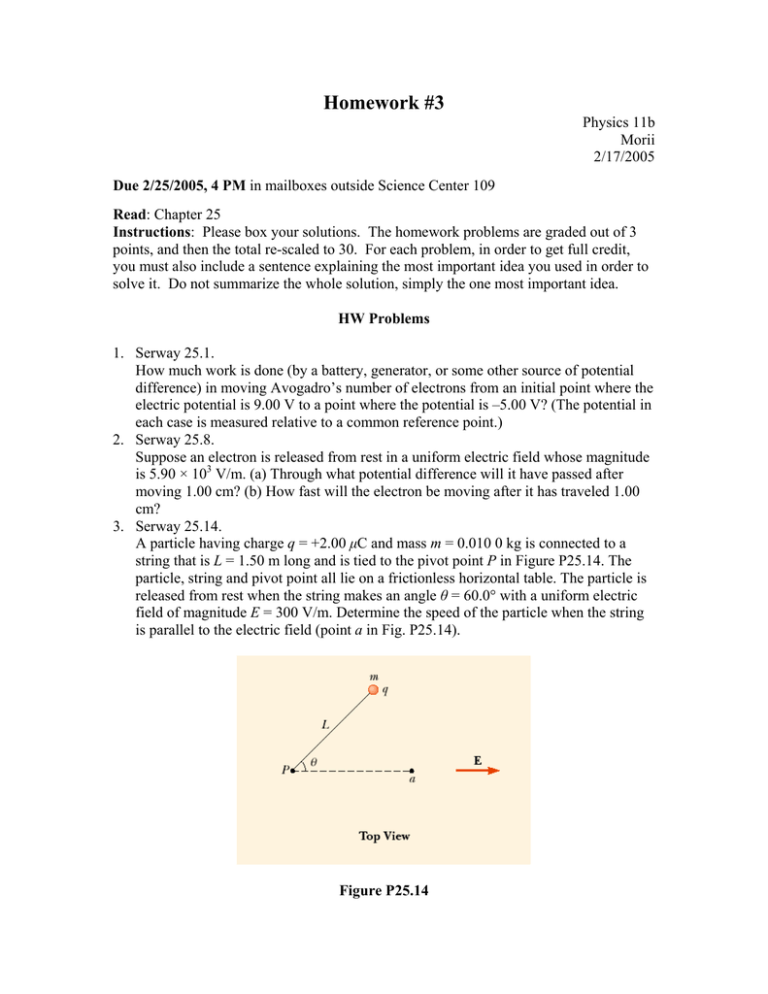
Homework #3 Physics 11b Morii 2/17/2005 Due 2/25/2005, 4 PM in mailboxes outside Science Center 109 Read: Chapter 25 Instructions: Please box your solutions. The homework problems are graded out of 3 points, and then the total re-scaled to 30. For each problem, in order to get full credit, you must also include a sentence explaining the most important idea you used in order to solve it. Do not summarize the whole solution, simply the one most important idea. HW Problems 1. Serway 25.1. How much work is done (by a battery, generator, or some other source of potential difference) in moving Avogadro’s number of electrons from an initial point where the electric potential is 9.00 V to a point where the potential is –5.00 V? (The potential in each case is measured relative to a common reference point.) 2. Serway 25.8. Suppose an electron is released from rest in a uniform electric field whose magnitude is 5.90 × 103 V/m. (a) Through what potential difference will it have passed after moving 1.00 cm? (b) How fast will the electron be moving after it has traveled 1.00 cm? 3. Serway 25.14. A particle having charge q = +2.00 µC and mass m = 0.010 0 kg is connected to a string that is L = 1.50 m long and is tied to the pivot point P in Figure P25.14. The particle, string and pivot point all lie on a frictionless horizontal table. The particle is released from rest when the string makes an angle θ = 60.0° with a uniform electric field of magnitude E = 300 V/m. Determine the speed of the particle when the string is parallel to the electric field (point a in Fig. P25.14). Figure P25.14 4. Serway 25.18. A charge +q is at the origin. A charge –2q is at x = 2.00 m on the x axis. For what finite value(s) of x is (a) the electric field zero? (b) the electric potential zero? Reference level of potential is V = 0 at r = ∞. 5. Serway 25.21. Four identical point charges (q = +10.0 µC) are located on the corners of a rectangle as shown in Figure P23.57. The dimensions of the rectangle are L = 60.0 cm and W = 15.0 cm. Calculate the change in electric potential energy of the system as the charge at the lower left corner in Figure P23.57 is brought to this position from infinitely far away. Assume that the other three charges in Figure P23.57 remain fixed in position. Figure P23.57 6. Serway 25.33. An electron starts from rest 3.00 cm from the center of a uniformly charged insulating sphere of radius 2.00 cm and total charge 1.00 nC. What is the speed of the electron when it reaches the surface of the sphere? (You should read Example 25.8 in the textbook first.) 7. Serway 25.40. Figure P25.40 shows several equipotential lines each labeled by its potential in volts. The distance between the lines of the square grid represents 1.00 cm. (a) Is the magnitude of the field larger at A or at B? Why? (b) What is E at B? (c) Represent what the field looks like by drawing at least eight field lines. Figure P25.40 8. Serway 25.46. Calculate the electric potential at point P on the axis of the annulus shown in Figure P25.46, which has a uniform charge density σ. Figure P25.46 9. Serway 25.47. A wire having a uniform linear charge density λ is bent into the shape shown in Figure P25.47. Find the electrical potential at point O. Figure P25.47
